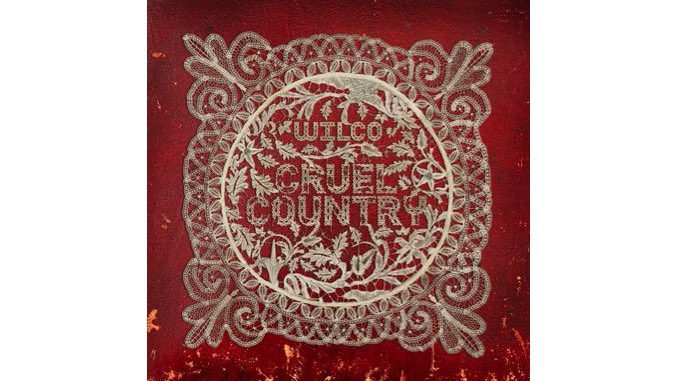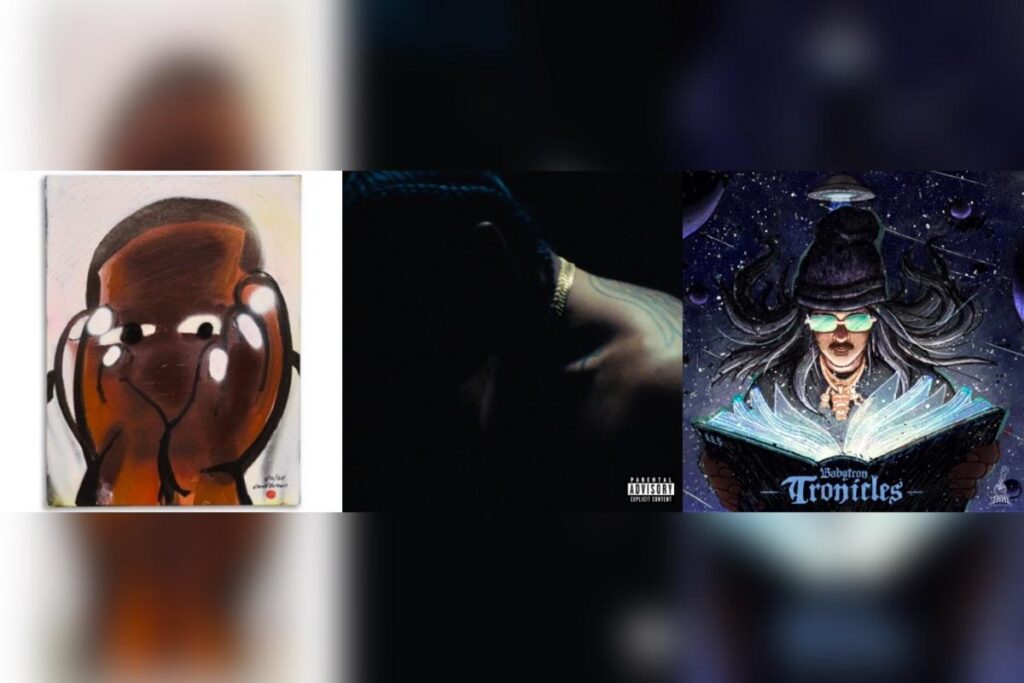Joni Mitchell is a provocateur, a painter and a poet. She once said, “I’m a painter first. I sing my sorrow and I paint my joy.” This description might seem astounding considering her rank as one of the best musical artists of the 20th century, but you can also see the life and wisdom in her portraits, which can be found on the covers of her albums Clouds, Both Sides Now and Taming The Tiger, to name a few. That she considers herself a visual artist before a musician makes it only more charming that Mitchell has achieved such acclaim through her recorded works. Like her peers from the folk revival of the 1960s and into the early 1970s (i.e. Bob Dylan, James Taylor, Crosby, Stills & Nash, etc.), Mitchell ushered in a new way of singing socially conscious songs. Her songs “Woodstock” and “Big Yellow Taxi” came to be anthems for the counterculture movement, her performances at Newport Folk Festival in the late ’60s are legendary and her albums from that era—like Clouds and Ladies of the Canyon—are some of her best work, as you’ll see below. She would go on to become a habitual shapeshifter, exploring the realms of experimental jazz, avant-garde rock and even synth-pop, very often latching on to whatever genre was prevailing in American pop culture at a given time. These efforts brought on a mix of more timeless classics, as well as a few forgettable studies in sound. But they’re all representative of an artist who remains iconic. We revisited every stage of Joni and returned with this handy ranking of her albums. Each is unique and special in its own way, but only a few will go down in history as some of the best recorded albums of all time.
19. Dog Eat Dog (1985)
As much as we’d love to give Mitchell credit for all her many musical evolutions, her sashay into the synth-fueled pop of the 1980s just didn’t age well. Dog Eat Dog isn’t unlistenable, but Joni’s own hand is practically unrecognizable in the music. It’s one of only a handful of records where Mitchell forgoes the guitar entirely in favor of synths and keys. Session musician Michael Landau does offer guitar on the album, but it very often sounds like a copycat of the popular heartland rock artists of the day. Mitchell is certainly a versatile musician, but I’m admittedly glad her synth-pop phase didn’t last long. —Ellen Johnson
18. Chalk Mark in a Rain Storm (1988)
Here is yet another snapshot of 1980s popular music in Mitchell’s catalogue. Ever the shapeshifter, Mitchell explores synths and soaring, atmospheric drums on the boisterous Chalk Mark in a Rain Storm—this time with help from other superstars like Billy Idol, Tom Petty, Don Henley and Willie Nelson. Despite the firepower, unfortunately Chalk Mark feels more like the aged Muzak you might hear on the loudspeaker at the grocery store than timeless experimentation. —Ellen Johnson
17. Turbulent Indigo (1994)
Sometime in the mid-1970s I saw Joni Mitchell, sort of, from the upper deck of a basketball arena in Columbus, Ohio. She was a tiny figure in the distance who may or may not have been hunched over a piano; it was hard to tell. Her intimate, confessional songs didn’t translate well into oversize barns, and at one point she stopped the concert to chide the audience for its inattention. “Why aren’t you listening?” she asked. By then I had been listening to her music for a long time. I’d gone back and discovered those wondrous early folk albums. I’d eagerly purchased the folk/pop/jazz hybrids For the Roses and Court and Spark that followed Blue, and which found Joni at the peak of her creative powers. I stayed with her through the late-‘70s jazz experiments, when she lost much of her pop audience, and I was delighted to discover the music of Weather Report and Charles Mingus through Joni’s influence. She lost me in the early ’80s when she started writing lyrics like, “The three great stimulants of the exhausted ones / Artifice, brutality and innocence,” which sounded like it was supposed to be incredibly profound, and which I still haven’t figured out. But she found me again on albums like Chalk Mark in a Rain Storm and Turbulent Indigo, when she rediscovered the uncharted territories of the heart. —Andy Whitman
16. Taming the Tiger (1998)
When Mitchell released her 16th studio album Taming the Tiger in 1998, it was touted as her last. That speculation was proven false when Mitchell shared Both Sides Now two years later, but it’s not difficult to imagine Taming the Tiger as a swan song. Pivoting back to the free-jazz influences of the 1970s and early ’80s, Mitchell weaves a rather astounding array of sonic textures on this record. It can be a little disorienting at times, but, ultimately, Mitchell still offers enough enticing lyrical material to keep me satisfied throughout the whole listen. Plus, we get to hear Mitchell suggestively sing the line ” You can’t tame the tiger / Oh, be nice, kitty kitty.” Carole Baskin could never. —Ellen Johnson
15. Shine (2007)
Unless Mitchell is plotting a secret comeback, 2007’s Shine is her last album of original studio works. Full of her token woodwinds and some beautiful piano arrangements, Shine was supposedly inspired by ongoing events in the early 2000s like violence in the Middle East and uproar over climate change. Similar to her beginnings in folk and protest music, Mitchell was once again charting history. She herself said, “I’m proud of it, because this is as serious a work as I’ve ever done. I have always had an ecological overview. I am looking at the planet, what the churches are doing, what’s happening to the water. Usually, nobody knows what I am talking about, and they call me an alarmist. It’s funny to think I am on time – maybe even a little late.”—Ellen Johnson
14. Night Ride Home (1991)
Night Ride Home begins with rhythmic cricket noises, which is a telling sign of the whimsy that follows in the next 50 minutes of this album. Mitchell once again chooses to blend folk and jazz in another solid studio effort, this time touching on some serious topics like sexual abuse (“Cherokee Louise”), spiritual revelation (“Slouching Towards Bethlehem,” famously based on the poem by W. B. Yeats) and a fleeting middle-aged romance (“Nothing Can Be Done”). —Ellen Johnson
13. Travelogue (2002)
Travelogue isn’t an album of studio originals, per se—all the songs are Mitchell’s, but they’re gussied-up versions, fortified reworkings of already beautiful tracks from throughout her career. The new orchestral interpretations soar and bulge throughout the double album’s two hours, giving us a new perspective on beloved tunes like “Amelia,” “Woodstock” and “Hejira.” These tracks are especially interesting considering Mitchell’s slant towards minimalism throughout most of her recorded works. —Ellen Johnson
12. Wild Things Run Fast (1982)
After quartet of free-form jazz albums in 1975-79, Mitchell returned to short, even lines and recurring, memorable melodies on this project. Far from weakening the jazz elements in her music, this shift gave them more substance to color and elaborate. “Moon at the Window,” for example, is a folk song about romantic desertion, but it provides rich raw material for Larry Klein’s bell-tone bass lines and Wayne Shorter’s high, lonely soprano sax. Most of the songs describe the slippery, transient nature of modern romance, and the every-shifting jazz arrangement reinforce the lyrics. —Geoffrey Himes
11. Don Jaun’s Reckless Daughter (1977)
Yet another double album, Don Jaun’s Reckless Daughter builds on the experimental jazz framework laid down on Hejira just the year before. But with all its meandering pedal effects, stacked guitars and wonky tuning, it may just be Mitchell’s most experimental release to date. This is not to mention the sprawling “Paprika Plains,” a 16-minute doozy of a track which was recorded during an improvisation session with a full orchestra. “The Improvisational, the spontaneous aspect of this creative process – still as a poet – is to set words to the music, which is a hammer and chisel process,” Mitchell said at one point on her website. “Sometimes it flows, but a lot of times it’s blocked by concept.” And flows, it does. —Ellen Johnson
10. Both Sides Now (2000)
If Mitchell’s career was devoted to encapsulating life’s journey in one perfect song, she did it with 1969’s “Both Sides Now.” Inspired by a passage about clouds from the 1959 Saul Bellow novel, Henderson The Rain King, “Both Sides Now” has become one of Mitchell’s best-loved songs. The original version was recorded when she was only 26, but at 57, she recorded the song again with a full orchestra. That 2000 version is the pan-ultimate recording of the song and the heart of her 2000 album of the same name: the strings swoon in the back, as Mitchell sings in the smoky, warbled voice, of a woman wizened to both sides of life. —Alexa Peters
9. For the Roses (1972)
If the first half of her career is marked by intentional folk output and the second by freewheeling jazz experimentation, For the Roses finds a determined Joni Mitchell somewhere in the middle. Vocally and lyrically, some of these songs (like album opener “Banquet” and the title track) wouldn’t be out of place on Clouds or Blue. But then we hear Mitchell build sonic elements on top of one another on tunes like the sensual hit “You Turn Me On, I’m A Radio,” and we’re reminded that Mitchell is still stretching her legs. Some of the songs were said to be inspired by Mitchell’s brief relationship with fellow singer/songwriter James Taylor. For the Roses is as elegant as anything Mitchell ever released, and, even when it leans into more casual soft-rock, you never forget that you’re listening to the one and only Joni Mitchell. —Ellen Johnson
8. The Hissing of Summer Lawns (1975)
If there was still any debate by 1975, Joni Mitchell’s seventh studio offering The Hissing of Summer Lawns cemented her place as a visionary creative force to be reckoned with—and boldly announced to the world that Mitchell wasn’t the type of artist to be confined by her own hit potential. Mitchell had already produced four of her own records, growing steadily more seasoned and adventurous with each one and hitting paydirt a year earlier with Court and Spark, her biggest commercial success to this day. But, where Court and Spark saw Mitchell stretching the rules of folk and pop to fit an increasingly jazz-based sensibility, songs like “Help Me” and “Free Man in Paris” still nested comfortably within traditional notions of form. On The Hissing of Summer Lawns, structure and genre melt down in an elastic, dreamlike ambience that sounds like no other record ever made. The way Mitchell creates an underwater sensation singing about “yellow schools of taxi fishes,” for example, is just one of many moments where she reaches new heights of sublime. It’s fun to imagine how the record execs reacted when they realized Mitchell was about to follow-up double-platinum sales with a challenging record nipping at the edges of the avant-garde, but one can easily picture them trusting her judgment too, as Hissing’s sonic adventurousness never obscures Mitchell’s unparalleled songwriting gifts. No less an authority than Prince raved about this album, and it’s easy to see why. —Saby Reyes-Kulkarni
7. Mingus
Being the restless artist she is, Joni Mitchell has never been content to make the same album twice. Her first nine albums were, of course, vastly different in their own ways, but 1979’s Mingus, a starkly minimalist study of jazz and atmosphere, was a project unlike any she’d accomplished before. The album was Mitchell’s collaboration with jazz legend Charles Mingus, who passed away shortly after its release. The master composer and instrumentalist spent 30 years getting down with jazz greats like Louis Armstrong, Duke Ellington and Charlie Parker, but this experimental manifesto with the melodically inclined Joni Mitchell would end up being his final musical mark. “The Dry Cleaner From Des Moines” is the tuneful, toe-tapping ode to big bands, but the rest of of the album is, for the most part, quiet and suspicious. Joni Mitchell even scats during the interludes—seriously, what can’t she do? —Ellen Johnson
6. Court and Spark (1974)
This was Mitchell’s most successful album in sales (double platinum) and critical response (#1 in the 1974 Village Voice Pazz & Jop Critics Poll). It even yielded her only top-10 pop single as a performer, “Help Me.” Working with members of the Crusaders and Tom Scott & the L.A. Express, Mitchell perfected the folk-pop-jazz hybrid she first explored on For the Roses by cleaning up the seams between her frail soprano/folk guitar and the fuller textures of the instrumentalists. The writing is solid but contains only one indelible song, “Help Me.” —Geoffrey Himes
5. Ladies of the Canyon (1970)
The title track of Joni Mitchell’s 1970 album Ladies Of The Canyon describes three women. They lived in Laurel Canyon, up in the Hollywood Hills, along a mountain gorge that had long been a bohemian refuge not far from Sunset Strip. In the late ’60s, folk and rock ‘n’ roll musicians began moving into the cheap cottages on the dead-end streets branching off Laurel Canyon Boulevard. Mitchell lived in one such home with her then-lover Graham Nash, who immortalized it as “a very, very, very fine house with two cats in the yard” and who has always insisted he first sang with David Crosby and Stephen Stills in that cottage. There was a lot of sex and drugs going on, but we’ll leave those stories to the anthropologists. What endures from that time is a particular kind of music, a reaction to the urban, street-corner masculinity of most rock ‘n’ roll before 1970. By contrast, the Laurel Canyon Sound was rural, domestic and feminine, full of introspective lyrics, twangy wood instruments and pillowy vocal blends. And Mitchell was the genre’s true genius. One of the women in the song “Ladies of the Canyon,” was Trina (loosely based on cartoonist/artist Trina Robbins), who embroidered her second-hand coat with leaves and vines. Yes, it was beautiful, but is this “antique luxury” rebellion or middle-class privilege? Annie (loosely based on the Mamas and Papas’ Cass Elliot) fed every stray who walked in—feral cat or male musician, it didn’t matter. But was this maternal magnanimity or servile co-dependence? Estrella (loosely based on Mitchell herself) hurled “songs like tiny hammers” at “beveled mirrors in empty halls.” The domestic sphere of women deserves attention, she implied, but at what point does it become merely insular? With such questions, Mitchell pushed the boundaries of the Laurel Canyon Sound as far as it could go. —Geoffrey Himes
4. Song to a Seagull (1968)
“I Had a King,” the very first song on Mitchell’s 1968 debut album, Song to a Seagull, is also one of its most poignant. Looking back on a lost love, she sings of a king who has “swept with the broom of contempt / and the rooms have an empty ring.” It was the first of many indications—not including, of course, the hits she had already written for other artists by the time she recorded Seagull—that Mitchell could wring a deep sense of introspection and complexity from just a few chords and a lilting melody. In this case, her failed marriage to musician Chuck Mitchell provided the material she needed to open one of the most storied recording careers in folk-music history. —Alexa Peters
3. Hejira (1976)
In 1976, after spending years in the limelight, singing and playing hippie-friendly anthems like “Big Yellow Taxi” and “The Circle Game” for people who came of age in the ‘60s, Joni Mitchell needed time off to reflect and reassess. Her solution was to drive across America by herself, and the time away gave birth to the songs on Hejira, a word that loosely translates as “traveler” in Arabic. Songs like “Amelia,” “Coyote” and especially “Song for Sharon” expressed a new depth and maturity in her lyrics that perfectly fused with the challenging new music she was composing. Supported by a stellar who’s who of modern jazz musicians including Jaco Pastorious, Tom Scott and Larry Carlton, Mitchell’s guitar playing that had previously comprised of little more than folk strumming attained a mastery of expressing, phrasing and tone that has lost none of its power or innovation with the passage of time. Rhythmically complex, daring and beautiful, Hejira’s travelogues of despair and illumination have inspired many to consider it the finest album in her discography. —Doug Heselgrave
2. Clouds (1969)
If you’re a fan, there are many Joni Mitchells from which to choose. There’s folky Joni. There’s ’80s Joni, who so gleefully embraced the synth spirit. There’s Blue Joni. And there’s painter Joni (Joni’s favorite Joni, as she told Jody Denberg in 1998). On her second ever album, Clouds, Joni’s just Joni, fully herself and almost untarnished by production. As on Blue, she sticks almost exclusively to acoustic guitar, an instrument that, like her paintbrush, allowed her to tell stories about relationships (with herself and with others) in the most colorful ways possible. It’s fitting that painter Joni has a place on this record, too: The album cover, like many of hers, is a self-portrait, which is especially appropriate for this exploratory album, a deep-dive into her own psyche and the anatomy of her romantic relationship. On Clouds, Mitchell takes delight in the sunlight coating the streets of her New York City neighborhood (“Chelsea Morning”), confronts fear (“I Think I Understand”) and packs on the natural imagery (most every track). Clouds is by no means flashy, but it’s still home to some of Joni Mitchell’s most beautiful compositions. —Ellen Johnson
1. Blue (1971)
It’s no coincidence that the title of Mitchell’s fourth album echoes the title of Miles Davis’ Kind of Blue, for the singer-songwriter similarly uses modal minimalism and augmented chords to lend a translucent glow to romantic melancholy. Written in the wake of her break-up with longtime lover Graham Nash, these songs have such sturdy melodies and stories that they can afford to be stripped down and stripped bare in the studio, often to nothing more than Mitchell’s soprano and acoustic guitar, dulcimer or piano. The results include her catchiest tune since “Both Sides Now” (“Carey”) and the 1970s’ best new Christmas song (“River”). —Geoffrey Himes




